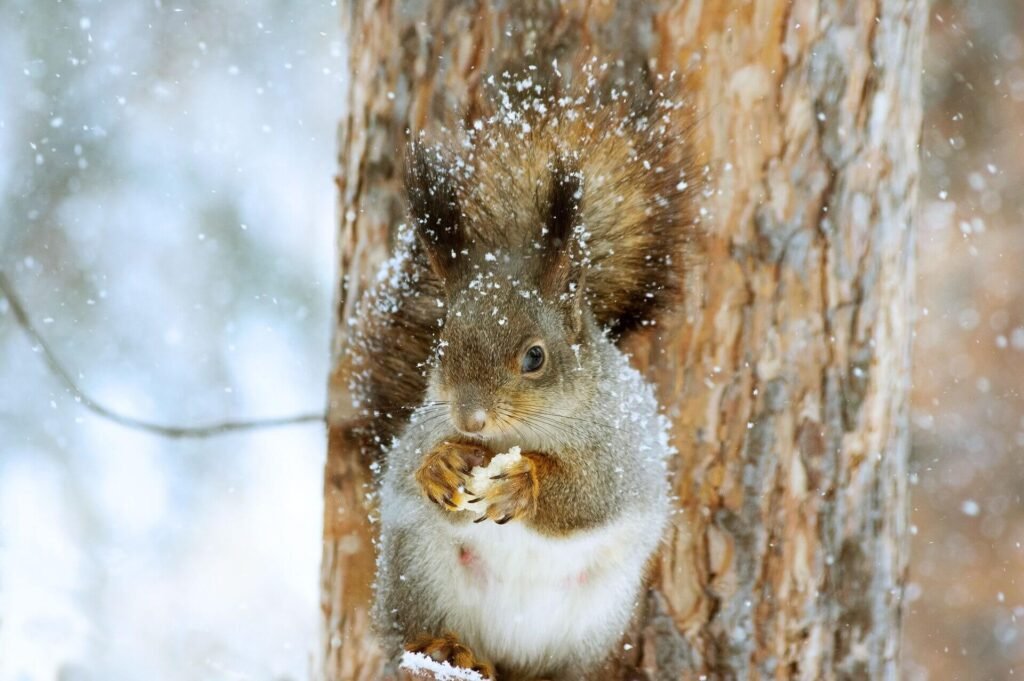The tundra is a cold, dry biome. It’s home to many different types of animals and plants that have adapted to live there. It covers much of northern Canada, Greenland, and parts of Russia. It’s characterized by permafrost, low temperatures, and short growing seasons.

What animals live in the tundra? Let’s find out!
Arctic Fox
The Arctic Fox is one of the most elusive animals in North America. It’s also one of the world’s smallest canids, with adults weighing only about five pounds. But don’t let its size fool you – this little guy has some big tricks up his sleeve! He’ll spend all day hunting for food, but he won’t eat it until nightfall when fewer predators are around to steal his meal. His blue-white fur is quite helpful to camouflage himself from potential predators too.

Another member of the Fox family you might occasionally find in the tundra is the red fox.
Reindeer
Reindeer are the best! Did you know that Reindeer eat moss with a natural antifreeze and also works as an antifreeze in the Reindeer’s blood? Or that they can see ultraviolet light? They also have an extra set of eyelashes to keep out snow and ice.
The Reindeer is also known as caribou and one of the most popular animals in Christmas lore, and it’s not hard to see why. They’re beautiful creatures with long legs, large antlers, and soft fur. That’s why Santa’s sleigh is pulled by eight reindeers!
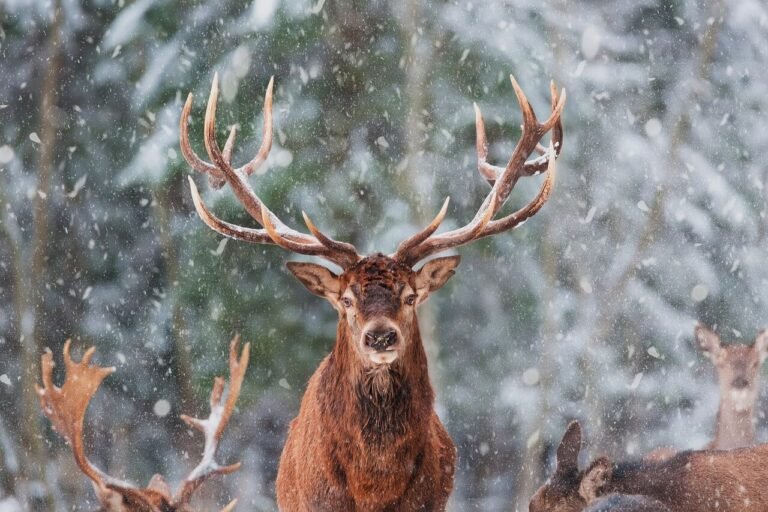
Reindeers can swim and fly at speeds up to 60 mp/h. A male reindeer is called a “buck” or “bull,” while females are known as “does.” The word “rein” comes from Old Norse words meaning “to control” or “to direct.” This refers to their use by humans when pulling sleds during the winter months. Reindeers were first domesticated around 4500 BC in northern Europe and Siberia (although they may have been tamed earlier). These days they live primarily in Scandinavia, Russia, Alaska, and Canada. They also inhabit parts of Greenland that have no human population due to its harsh climate conditions.
Moose
Polar Bear
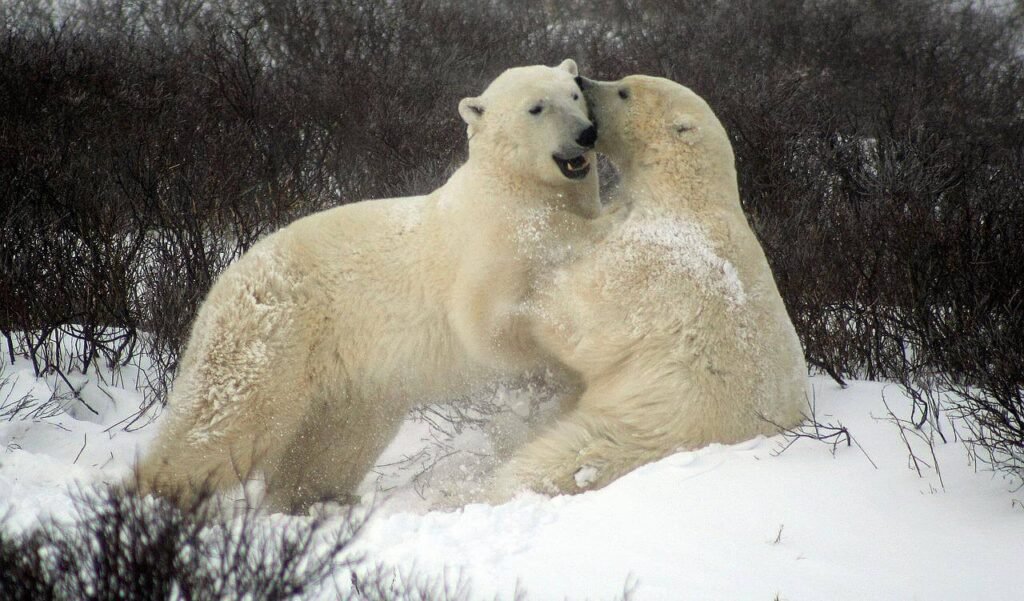
Polar bears are the world’s largest land carnivores, and they live in the tundra too. They’re also one of the most iconic animals on Earth, but their future is threatened by climate change. Besides polar bears, you’ll also find Brown Bears and Grizzly bears in the tundra.
Musk Ox
The musk ox is a large, hairy mammal that lives in the Arctic. It has long, shaggy hair and a thick coat of fur. They are also called “Ovibos moschatus” or “Tuktu.” Did you know that they can live up to 20 years? That’s an impressive lifespan for such a big animal! And did you know that they have two layers of fur? One layer is short and woolly, while the other one is longer and thicker. This helps them stay warm when it’s cold outside. Musk Oxen are very tough animals who can survive in temperatures as low as -70 degrees Fahrenheit (-56 Celsius).

These animals are so amazing! I’m sure there’s plenty more facts about these fascinating creatures out there waiting to be discovered… so keep reading!
Lemming
Lemmings are small rodents that live in the tundra and subarctic regions of North America, Europe, Asia, and Greenland. They’re also known as “lemming mice” or “lemmings.” These animals have a reputation for mass migrations. Luckily, the least weasels keep on reducing their population before it gets out of hand.
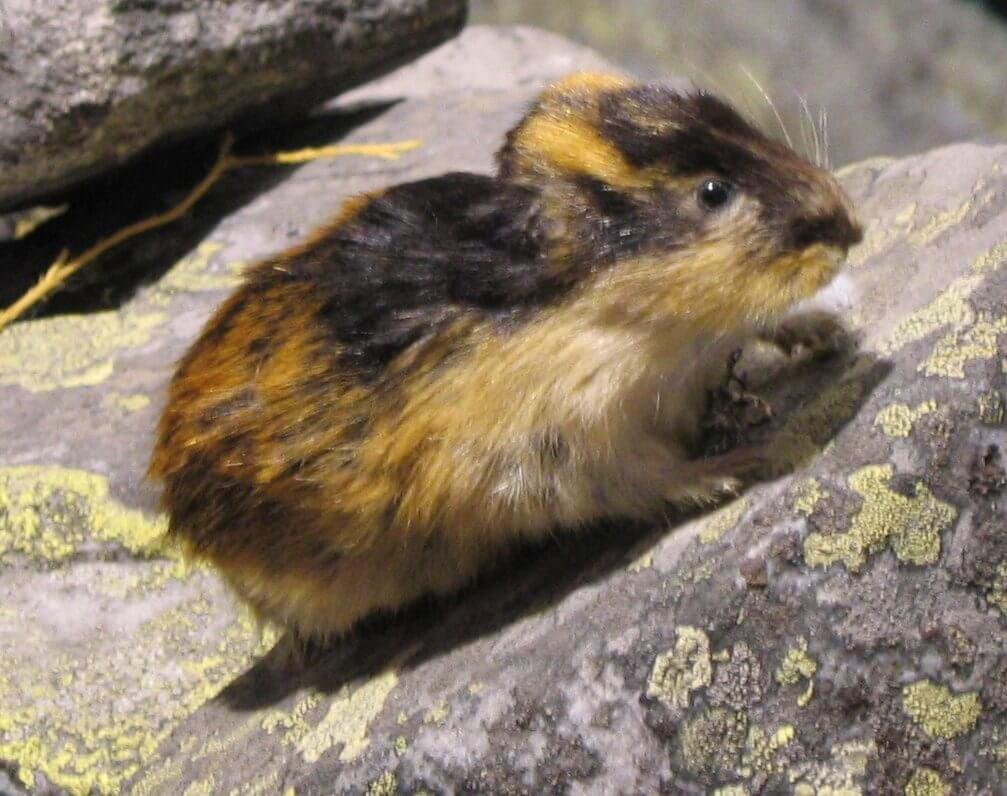
Arctic Hare
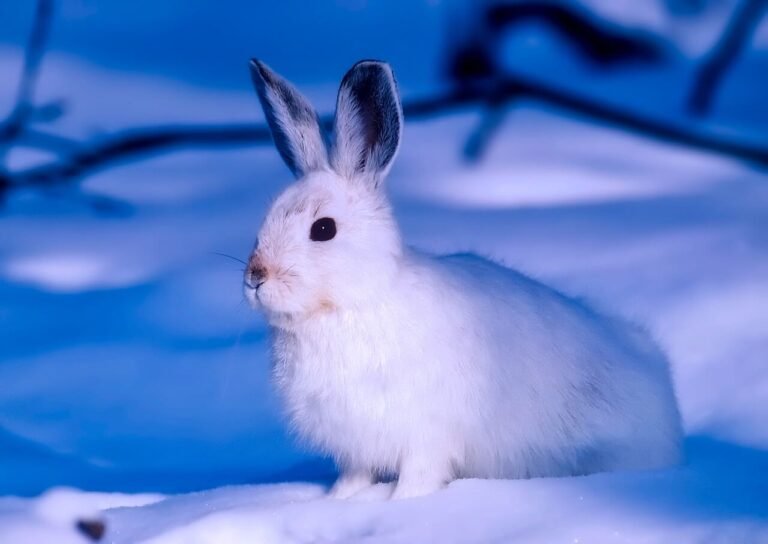
The Arctic Hare is a small mammal that lives in the tundra of North America and Eurasia. It has white fur, long ears, short legs, and often black spots on its ears. They are herbivores and eat plants such as grasses, sedges, mosses, lichens, and berries. They also eat snow to get water. An arctic hare’s average lifespan is around four years old, but they can live up to ten years old if they’re lucky enough to avoid predators. Hares are born fully furred with their eyes open. They usually give birth during the summer months when food is plentiful. A female will only produce one litter per year which consists of up to 8 young called leverets. Male hares do not help raise their offspring after birth because females do everything themselves, including nursing them until they’re weaned off milk at six-eight weeks old.
Arctic Wolf
Do you know the difference between a wolf and an arctic wolf? The Arctic Wolf is a subspecies of gray wolf that lives in the northernmost parts of North America, Europe, Asia, and Greenland. It has evolved to survive in freezing temperatures with thick fur and short ears for better heat retention. They are also known as white wolves or polar wolves.

Snowy Owl

Snowy owls are large, white birds that live in the tundra. It’s also one of the most beautiful animals on Earth. They hunt small rodents, especially lemmings. They start laying eggs in May and June, and the mother owls care for their owlets (baby owls) while the father owl goes hunting to feed the family.
Ptarmigans
Arctic Ground Squirrel
The Arctic Ground Squirrel is a small, furry rodent and one of the cutest animals in the tundra. They are herbivores, which means they eat plant matter – like grasses, mushrooms, fruits, leaves, and leaf buds. But they also eat insects and occasionally carrion. They build underground tunnels to keep themselves safe from predators, like arctic foxes, owls, wolves, and weasels.
Vole
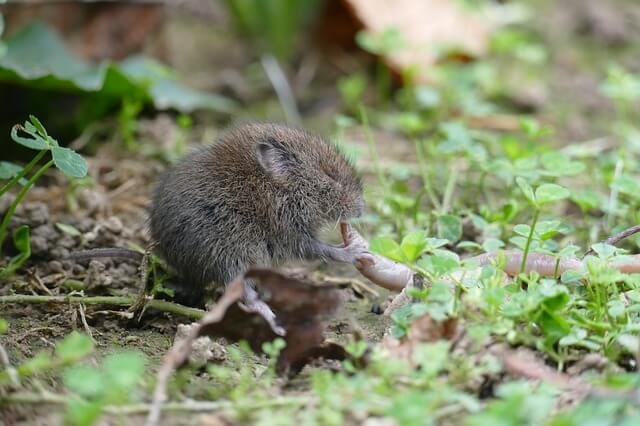
A vole is a small rodent and a relative of the lemmings, with short tails and long, soft fur. They are found in North America, Europe, Asia, and Africa. These little critters eat small plants, nuts, and fruits, and carrion.
Mountain Goat

The Mountain Goat is an animal that lives in the tundra. It’s also known as a Rocky Mountain goat. They have a thick coat in winter to keep themselves warm during the cold months, and they have long, sharp horns on their head for fighting with other goats or defending themselves from predators. They’re herbivores.
Marmot
These animals live in the tundra, and they love flowers! But not in a vase on their dinner table. No, for dinner! Like… flowers are part of their diet. They eat them!
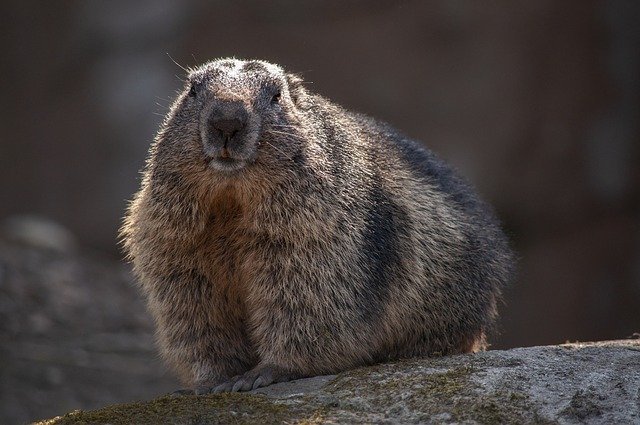
Penguin
Penguins are so adorable! They’re also fascinating. Did you know that they can’t fly? You probably knew that. But did you know that they have a waterproof layer of feathers and fat under their skin to keep them warm in the cold water? They eat fish. Lots of fish.
Penguins are carnivores, meaning they only eat meat. Their diet consists mainly of fish and squid. They also enjoy eating krill, which is a type of shrimp that lives in the ocean.
Loons

Arctic loons are a type of bird that lives in the tundra. They’re also called Great Northern Loon. These birds are found in North America and Eurasia, but they spend most of their time on the water. The only time you’ll see them on land is during the breeding season.
Snow Bunting
The Snow Bunting is a small, migratory songbird that lives in cold climates. They can be seen in places like Alaska, Canada, Russia, Greenland, Norway, and Iceland, where they live in boreal forests and the tundra.
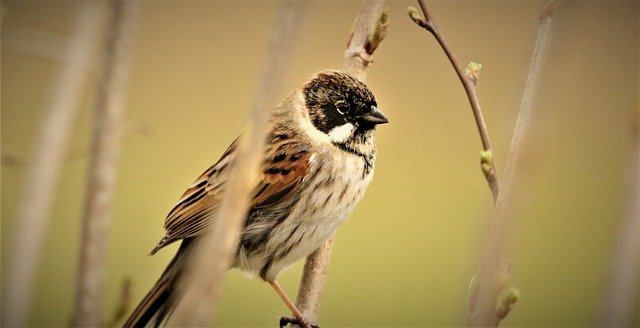
Walrus

The Walrus is a large, flippered marine mammal with a tusked mouth. They are found in all the world’s oceans and spend their lives on ice or shallow water. The males can grow to be 12 feet long and weigh up to 4,000 pounds! They’re carnivores and eat shrimps, crabs, tube worms, and other small animals.
Wolverine
A wolverine is a member of the weasel family. They are known for their ferocity and strength, but they can also be shy and elusive animals. Wolverines are animals who live in the tundra and boreal forests and can also be found in North America, Europe, Asia, and Alaska. The word “wolverine” comes from the Latin word Gulo (meaning glutton). This name was given because it was thought that the animal would eat anything. However, recent research has shown that they’re primarily scavengers.
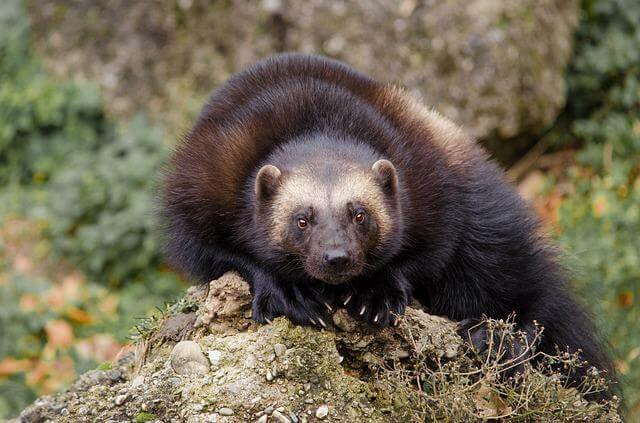
During mating season, males will defend females with whom they have mated from other males who might try to mate with them again before giving birth.
Beluga Whale & Narwhal
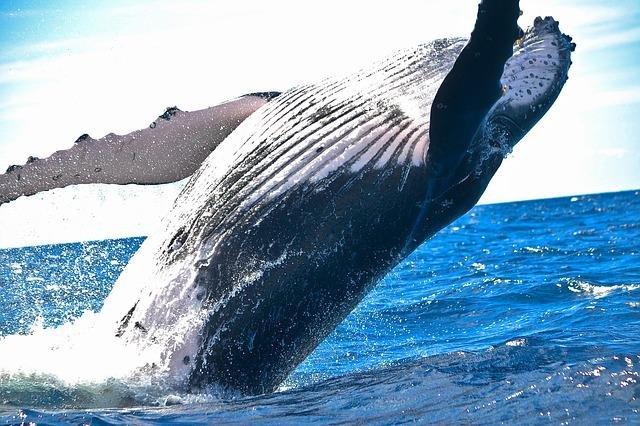
Narwhals are a type of whale that lives in the Arctic Ocean. Because of their large “tusk”, they’re also known as “the unicorns of the sea.” I bet you didn’t know this! The tusk(s) are two teeth coming out from their upper jaw. These teeth help them catching fish or squid. It’s so cool how they use these tusks to find food!
A Beluga whale is also a type of whale that lives in the Arctic Ocean. They are also called white whales because their skin color is light gray or white. These animals have been around for over two million years and can live up to 50-60 years old! They have a diverse diet but eat primary fish and shrimps.
Snowshoe Hare

A snowshoe hare is a type of hare that lives in North America. They are called “snowshoe” because they have large feet with fur on the soles to help them walk on top of the snow. These animals are very small, weighing about 2-3 pounds and measuring around 20 inches long.
Did you know that these little guys can run up to 30 miles per hour! That’s faster than most people can sprint! And they’re not just fast runners, but they’re excellent jumpers too – sometimes jumping as high as 7 feet off the ground! This animal has some pretty cool skills for such a tiny creature.
Tundra Swan
Have you ever seen a Tundra Swan? They are beautiful, graceful, and elegant. These birds live on lakes and rivers in the northern hemisphere. They have a white plumage and a black beak that make them look like they had too much chocolate!

Least Weasel
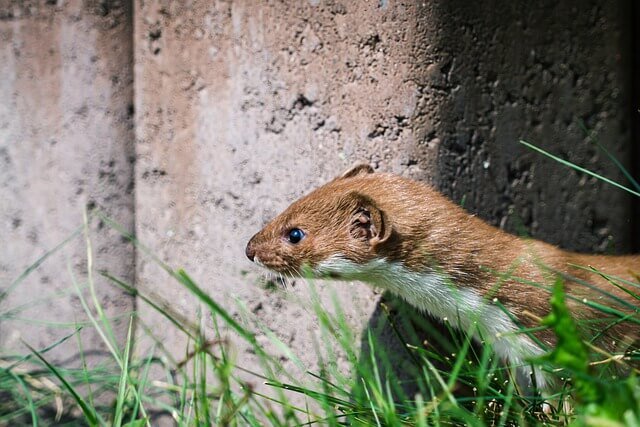
The Least Weasel is one of the most adorable animals in the tundra? They have sharp teeth and claws and are also very fast! They can run up to 15 miles per hour. Least weasels play an essential role in the tundra ecosystem because they mostly eat small rodents like lemmings, mice, and voles, and sometimes they will even go after larger prey such as rabbits squirrels. That’s why people often call them “the little killers” because their size doesn’t matter when it comes to hunting down food!


